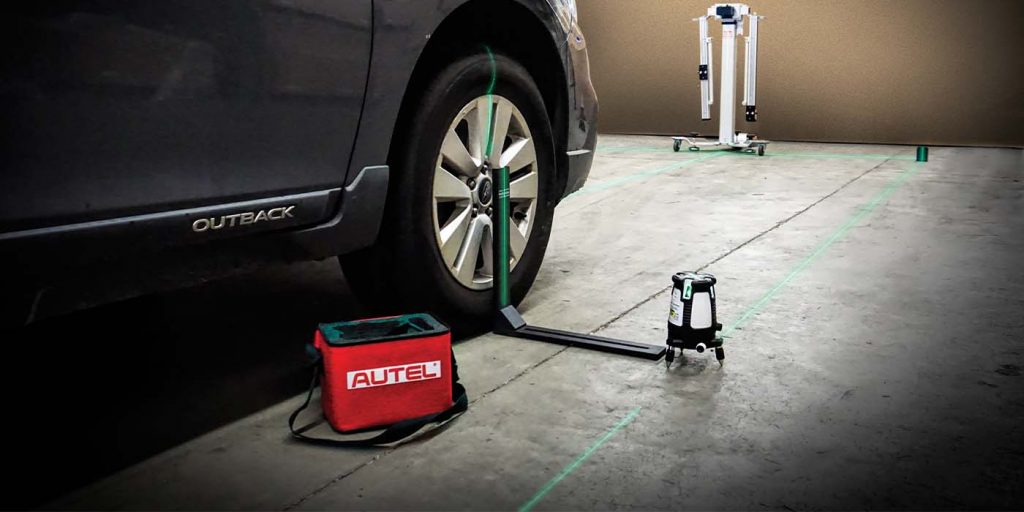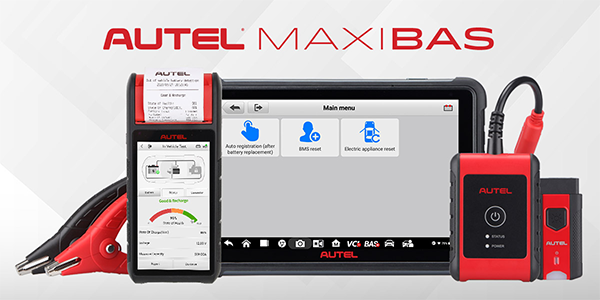Last month’s article on the Subaru EyeSight system included a short section at the end discussing the calibration for the camera system using the procedure in the service information compared to using aftermarket scan tools, fixtures and targets. It sparked some debate. The main concern was over the measurement process to set up the target.
The EyeSight system uses a static calibration method with a target placed in front of the vehicle at a specific distance. The large target looks like a huge QR code and needs to be precisely positioned relative to the centerline and front wheels of the vehicle. To hit this precise measurement, Subaru recommends using a tape measure, string and carpenter tools.
But there are better options. There are aftermarket ADAS tools to align the camera that use lasers, levels and electronics to set up the targets. These packages typically include a scan tool, fixtures and targets to calibrate not only cameras, but other ADAS systems like blind-spot detection and forward collision. Best of all, they can calibrate many makes and models that require static calibration.
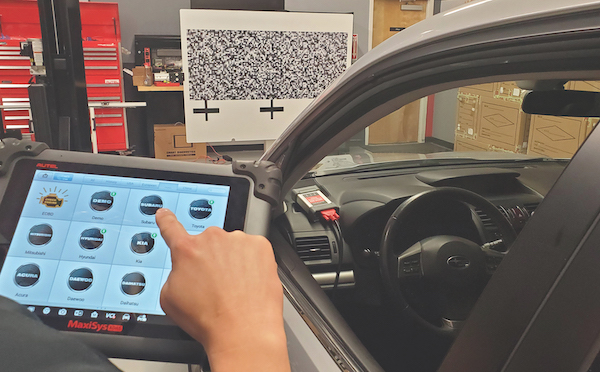
First Steps
All ADAS calibration procedures should start with the same steps no matter the make or the tools used for calibration. Most manufacturers, including Subaru, recommend the tires be inflated to the correct values. You need to make sure the chassis of the vehicle is aligned correctly. If you perform a calibration on any camera system and the vehicle pulls or the thrust angle is excessive, it can impact the performance ADAS cameras.
It is also critical that the steering angle sensor be calibrated before attempting any ADAS sensor calibration. The steering angle is a crucial piece of data for the safety systems. For example, on some 2015 Subaru models, the steering angle is used by the steering responsive fog lights (SRF).
Measuring the ride height is more critical than ever. If the front or rear is sagging, it changes the angle of the cameras.
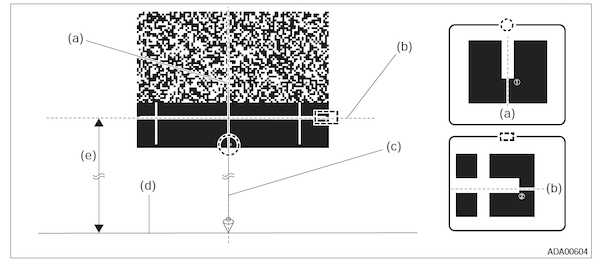
Factory Tools
The Subaru service information says the calibration can be performed with its factory scan tool, a target, packing tape, string and a plumb bob. Subaru does not give a part number for the plumb bob.
The Subaru procedure for every year involves finding the centerline of the vehicle. To find the center point in the front, Subaru instructs technicians to measure the distance between the front license plate bolts. On later models, a bolt under the grille is used to determine the center. In the rear, the center point is under the license plate. On 2015 Outback models, the center point is between two bolts on the rear bumper.
From these center points, you drop down the plumb bob on a string and mark the point on the floor with Subaru-approved packing tape and a marker. Using a long length of string or leveling line, stretch it between the center points in the front and rear.
Measure out another 10- to 13-feet in front of the vehicle and make a mark on the floor with the packing tape. Or, you can secure the string to the floor, so it falls on top of the front and rear marks.
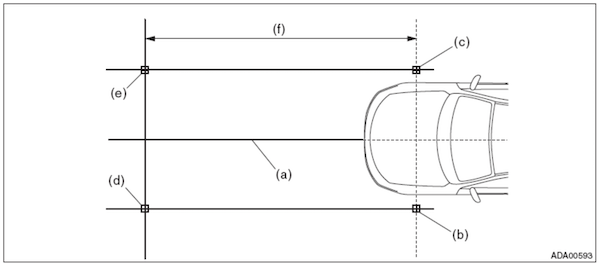
The next step is to use the plumb bob to mark the center of the front wheels on the floor. Using a metric measuring tape, measure 4,070 mm forward from the center of the wheels on both sides that is parallel to the measured centerline of the vehicle. This point is where the target should be placed. If you work at a dealership, you could mount the target to a wall or maybe paint some of the marks on the floor.
Subaru specifies a tolerance of ±4 mm for each measurement of the setup. This is not easy using string and a tape measure. Also, it can be impossible to verify the setup or the points on the vehicle.
A Better Way
Modern vehicles require modern tools. Tool manufacturers have come up with ADAS calibration systems with fixtures that use up to five lasers to square a camera or radar target to vehicle.
With these systems, the first step is to place the target fixture in front of the vehicle. The crossbar is then set to the close to the level of the center of the wheels. A laser line cast onto the front of the vehicle to find the centerline. The guided setup instruction will then have you set the correct distance from the vehicle to the fixture.
The next part of the alignment involves squaring the crossbar to the vehicle. Two lasers on the vehicle and two lasers on the crossbar are used to square the fixture to the vehicle. The lasers on the vehicle are mounted to the rear-wheels using wheel clamps that resemble those used with alignment systems. The heads of the wheel clamps have self-leveling lasers that put a dot on the crossbar. The crossbar also has lasers that place a dot on the targets on the rear wheels clamps. With the five lasers, it is possible to put the Subaru target in the correct position to calibrate the camera in less time and effort than using the OEM procedure.
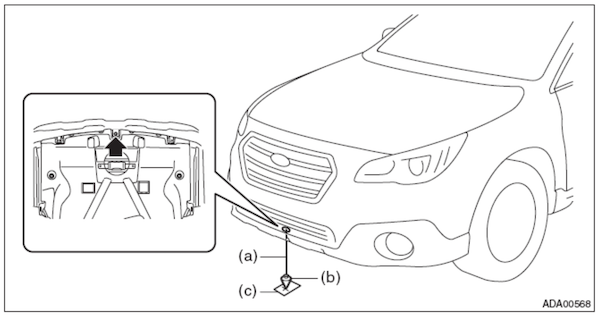
ADAS is not something a shop should fear. These calibration procedures are services can be a new profit center for shops. But, if you look in the factory service information for most ADAS systems, you might think that there is no way you could profitably offer calibration services. But if you look at the non-factory tools you will come to the conclusion that there is a lot of potential in offering ADAS calibration services.
Most ADAS calibration systems include the targets, fixtures and scan tool coverage to service multiple makes and models with cameras, radar and blind-spot detection systems. More and more of these vehicles are coming out of warranty and will need calibration not just for collisions and replacement windshields, but for repairs that might require removal of the bumper cover or radiator support.

